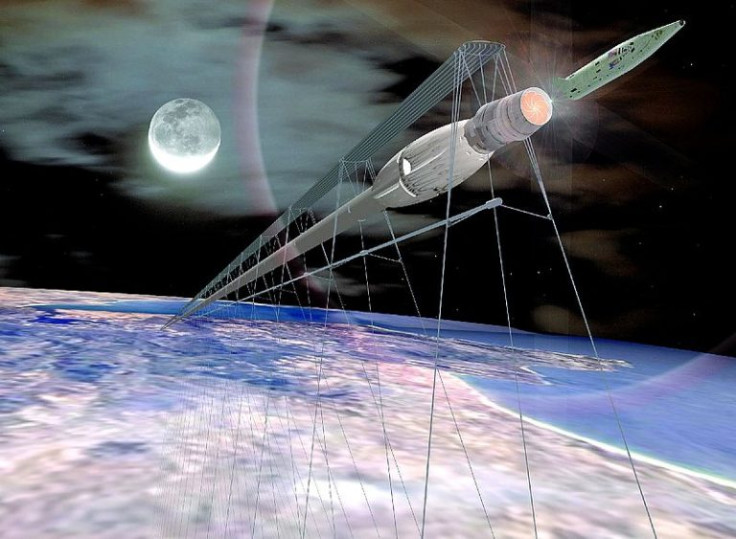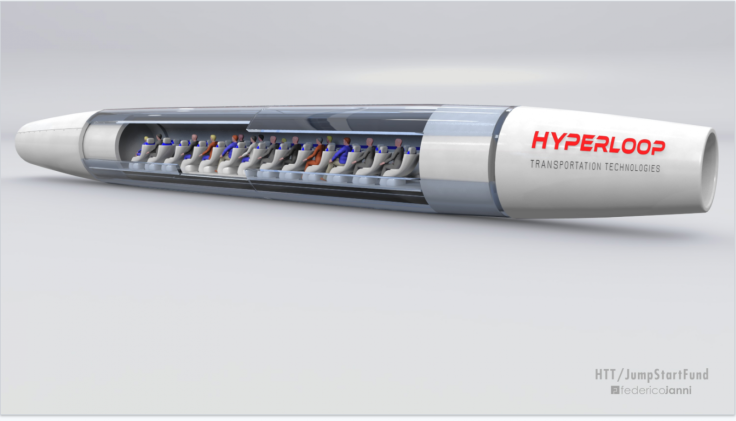StarTram: MagLev creator wants to fire satellites into space through vertical hyperloop tube
James Powell has filed a patent outlining how his theoretical StarTram system could work.

The inventor of the MagLev train is working on a way of combining magnetic levitation technology with that of Elon Musk's hyperloop to create a way of firing satellites into space without the need for a rocket.
James Powell calls the proposed system a 'StarTram' and explains in a US patent filing how it could be used to propel satellites weighing under 100kg into space, blasting them through an elevated tube fast enough to escape Earth's atmosphere and into orbit.
Outlined by Musk in a 2013 whitepaper, hyperloop is a means of creating a 700mph train by levitating it with cushions of air or magnets (like a MagLev train) and firing it through a sealed tunnel with its air removed, removing friction and allowing for speeds faster than an airliner.
Powell's plans, which appeared online a full year before Musk's hyperloop, describe a similar propulsion system to fire payloads into space without using rockets. The StarTram takes a hyperloop-style tunnel, fixes it to the top of a mountain, and points it upwards.
The patent was filed in the US on 7 April 2016 and published on 13 October that year. It is titled as a "system and method for magnetically launching projectiles or spacecraft".
Powell explains how the "electromagnet launching" of payloads into space "has the major advantage of minimising or even eliminating the need to carry fuel and rocket motors for propulsion and stabilisation of the payloads, as is particularly the case of missiles and rockets."
Deepak Gupta, who first brought the patent to the attention of IBTimes UK, explains: "The patent application suggests that we lift one end of the airtight tube, such that it is at an angle with respect to Earth. Now, the magnetically levitated vehicle within the tube will travel at high speed and will reach near Earth's escape velocity...on leaving the tube it will] travel away from the Earth or state revolving around the Earth like a satellite...James has basically redesigned hyperloop to launch space vehicles."

What isn't entirely clear is how objects would be fired out of the vacuum tube without air rushing back in through the exit. One solution could be a plasma window, which is created by heating gas until its viscosity is such that air cannot pass through.
There are two proposed generations of SpaceTram. First is an unmanned system which would accelerate spacecrafts at 30g through an 80-mile long tube fixed to the surface of a mountain peak and angled upwards at 10 degrees.
A second generation would carry humans, but due to our inability to survive high g-forces, the tube would need to be over 600 miles long so that speed could be built more gradually.
Powell believes launching payloads into space this way could cost as little as $43 (£35) per kg, compared to the $10,000 to $25,000 per kg it currently costs to fire equipment into space on a rocket. However, Powell's calculations are based on a system firing a 35-ton payload 10 times a day, which seems optimistic at best.
Clearly, the StarTram is little more than theoretical at this stage. But if hyperloop companies like HTT and Hyperloop One make a success of Musk's 700mph train in airless tunnels, who is to say that firing payloads upwards and into space isn't the next step?
© Copyright IBTimes 2025. All rights reserved.






















